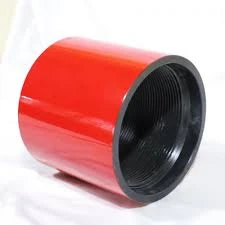- Afrikaans
- Albanian
- Amharic
- Arabic
- Armenian
- Azerbaijani
- Basque
- Belarusian
- Bengali
- Bosnian
- Bulgarian
- Catalan
- Cebuano
- Corsican
- Croatian
- Czech
- Danish
- Dutch
- English
- Esperanto
- Estonian
- Finnish
- French
- Frisian
- Galician
- Georgian
- German
- Greek
- Gujarati
- Haitian Creole
- hausa
- hawaiian
- Hebrew
- Hindi
- Miao
- Hungarian
- Icelandic
- igbo
- Indonesian
- irish
- Italian
- Japanese
- Javanese
- Kannada
- kazakh
- Khmer
- Rwandese
- Korean
- Kurdish
- Kyrgyz
- Lao
- Latin
- Latvian
- Lithuanian
- Luxembourgish
- Macedonian
- Malgashi
- Malay
- Malayalam
- Maltese
- Maori
- Marathi
- Mongolian
- Myanmar
- Nepali
- Norwegian
- Norwegian
- Occitan
- Pashto
- Persian
- Polish
- Portuguese
- Punjabi
- Romanian
- Russian
- Samoan
- Scottish Gaelic
- Serbian
- Sesotho
- Shona
- Sindhi
- Sinhala
- Slovak
- Slovenian
- Somali
- Spanish
- Sundanese
- Swahili
- Swedish
- Tagalog
- Tajik
- Tamil
- Tatar
- Telugu
- Thai
- Turkish
- Turkmen
- Ukrainian
- Urdu
- Uighur
- Uzbek
- Vietnamese
- Welsh
- Bantu
- Yiddish
- Yoruba
- Zulu
bull plug vs hex plug
Bull Plug vs. Hex Plug A Comprehensive Comparison
When it comes to the world of plumbing and piping, selecting the right type of plug can make a significant difference in both functionality and efficiency. Two common types of plugs are bull plugs and hex plugs. While both serve the purpose of sealing off pipe ends, they differ in design, application, and installation. This article will delve into the characteristics of bull plugs and hex plugs, comparing their uses and benefits to help you make an informed decision.
Bull Plugs
Bull plugs are designed with a rounded or cylindrical shape. They are typically used in applications where pressure sealing is a critical concern. The shape allows for a robust seal, which is essential in preventing leaks. Bull plugs are available in various materials, including brass, steel, and plastic, catering to different environmental conditions and fluid types.
One of the primary advantages of bull plugs is their simple installation process. They can be easily inserted into the pipe end and tightened without the need for specialized tools, making them a favorite among DIY enthusiasts and professional plumbers alike. Moreover, they are often favored in high-pressure applications for their superior sealing capabilities, which help maintain system integrity and reduce the risk of fluid loss.
In addition, bull plugs are often utilized in systems that require regular maintenance. The ease of installation allows for quick access to the pipe system, facilitating repairs and inspections. This feature enhances efficiency, minimizing downtime and operational costs.
Hex Plugs
bull plug vs hex plug

Hex plugs, on the other hand, are hexagonal in shape and are designed with a threaded end for secure attachment to a pipe. Their unique shape allows for better grip with a wrench or socket, providing a tighter seal and making them particularly suitable for high-pressure applications. Hex plugs are commonly made from metal, such as brass or stainless steel, which offers durability and resistance to corrosion.
One of the standout features of hex plugs is their versatility. They can be used in various applications, including oil and gas systems, hydraulic systems, and waterworks. Because hex plugs are designed for tighter settings, they can withstand higher pressure levels, making them ideal for use in demanding environments.
Installation of hex plugs typically requires tools such as wrenches, which may pose a challenge for those with limited experience. However, the secure fit they provide can make them the go-to option for professionals who require a reliable sealing solution. Furthermore, hex plugs are available in a range of sizes and materials, allowing for customization based on specific piping requirements.
Comparison and Conclusion
While bull plugs and hex plugs serve similar purposes, the choice between the two largely depends on the specific application and requirements. Bull plugs offer ease of installation and quick access, making them an excellent choice for systems requiring regular maintenance. They are ideal for environments where high sealing capabilities are necessary but do not impose excessive pressure.
Hex plugs, with their robust threading and hexagonal shape, provide a more secure and permanent solution for high-pressure applications. Their ability to withstand demanding conditions makes them suitable for professional use in various industries. However, they do require the right tools for installation, which may not be as user-friendly for casual users.
Ultimately, both bull plugs and hex plugs have their unique advantages and should be selected based on the specific needs of the plumbing system. Understanding the context in which each type of plug will be used will guide you in making the best decision for your particular application. Whether you choose the straightforward approach of bull plugs or the rugged reliability of hex plugs, both can contribute to a well-functioning piping system.
-
Tubing Pup Joints: Essential Components for Oil and Gas OperationsNewsJul.10,2025
-
Pup Joints: Essential Components for Reliable Drilling OperationsNewsJul.10,2025
-
Pipe Couplings: Connecting Your World EfficientlyNewsJul.10,2025
-
Mastering Oilfield Operations with Quality Tubing and CasingNewsJul.10,2025
-
High-Quality Casing Couplings for Every NeedNewsJul.10,2025
-
Boost Your Drilling Efficiency with Premium Crossover Tools & Seating NipplesNewsJul.10,2025







